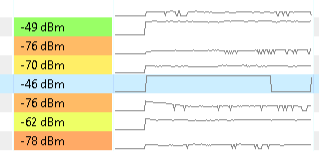Other Parts Discussed in Thread: , UNIFLASH,
Good afternoon,
I have a client who came to me with an existing project using a CC3200 device. They are using a project with TI-RTOS and the CC3200 SDK. They are configured in AP mode and reporting an issue with the Wifi on the device turning off in very specific circumstances (SSID no longer being broadcast). Those circumstances seem to be in a specific location when the broadcast is on Channel 6 and an unconfirmed suspicion that it may be related to the Amazon Eero mesh routers in the location. They told me there is a UART command that they issue which seems to fix the problem, and looking through the code that command goes through a routine which executes a sl_stop() and sl_start() which I believe is a big clue to the issue.
The only debug method they have is streaming out data from a UART channel. What is the most useful data to stream out to see the WiFi device status while it is in this state? Is sl_DevGet the right function to be looking at?
Thanks,
Kris


